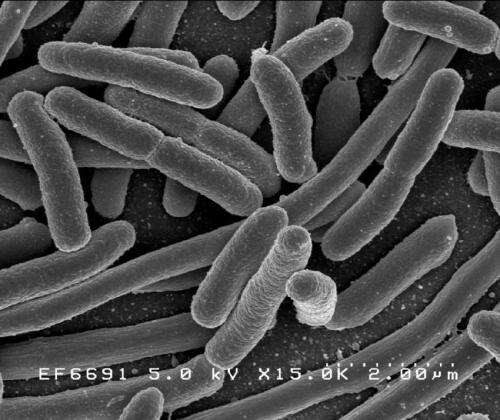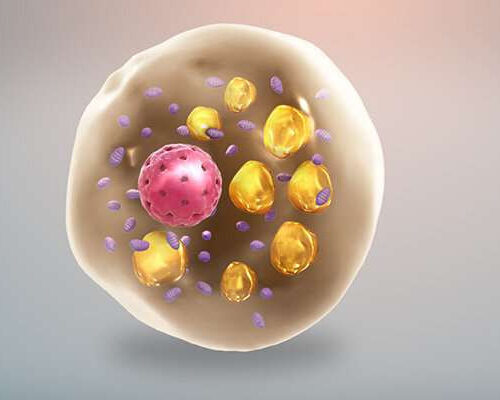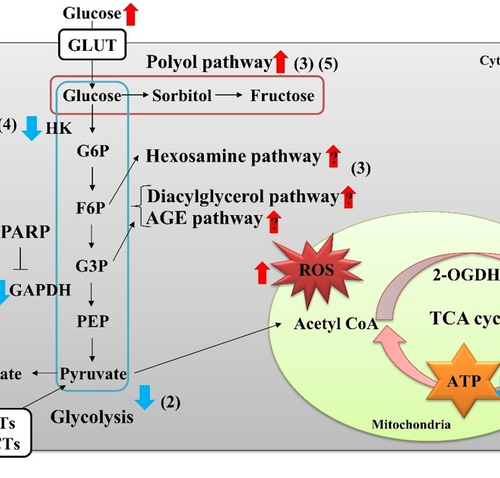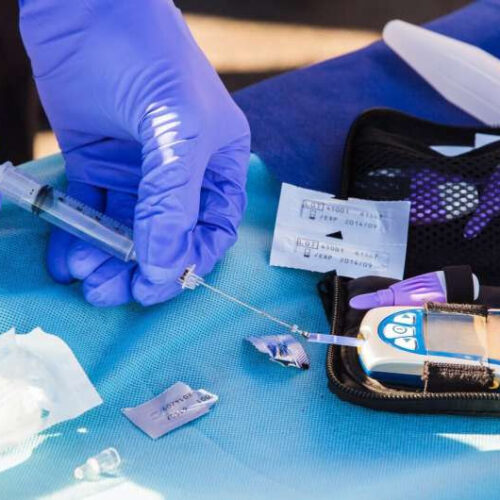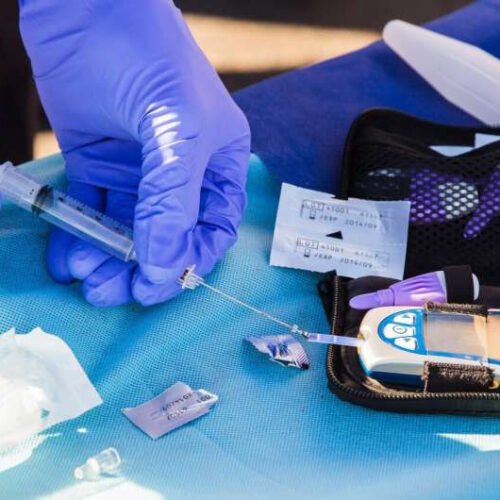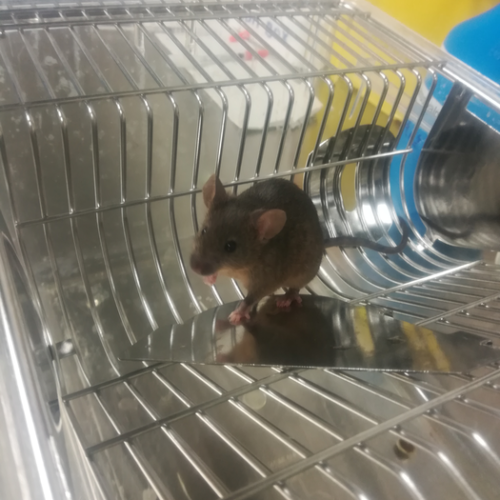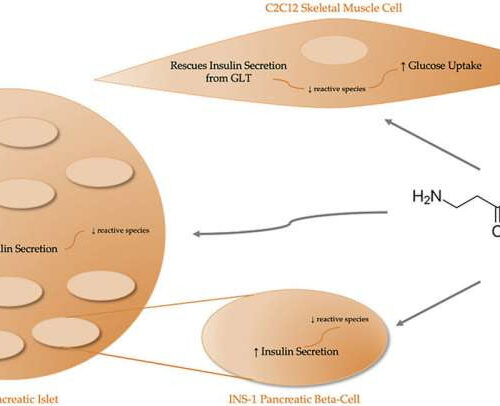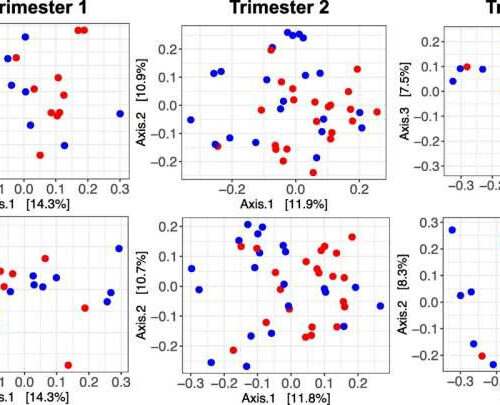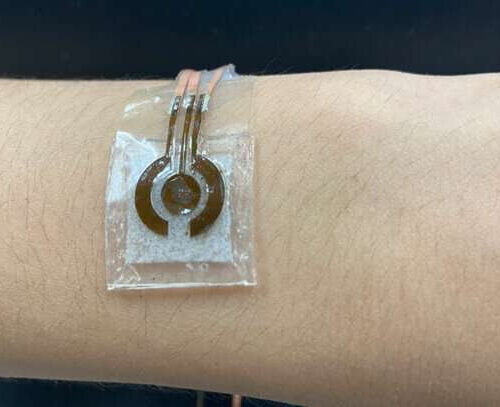by Linköping University Escherichia coli. Credit: Rocky Mountain Laboratories, NIAID, NIH A forgotten antibiotic, temocillin, led to lower selection of resistant bacteria than the standard treatment for febrile urinary tract infection, in a study published in The Lancet Infectious Diseases. Thus, temocillin may be useful in treating severe urinary tract infections that give rise to fever,...
Category: <span>Diabetes</span>
How glycogen is linked to heat generation in fat cells
by University of California – San Diego Artistic rendering of a brown fat cell with nucleus in pink, mitochondria in purple, and yellow lipid droplets scattered throughout. Credit: Scientific Animations Humans carry around with them, often abundantly so, at least two kinds of fat tissue: white and brown. White fat cells are essentially inert containers...
Pyruvate as an essential substance for the survival of neurons and Schwann cells under high-glucose milieu
TOKYO METROPOLITAN INSTITUTE OF MEDICAL SCIENCE IMAGE: RAPID AND EXTENSIVE SCHWANN CELL DEATH UNDER HIGH-GLUCOSE PYRUVATE-DEPLETED CONDITIONS CAN BE EVOKED BY THE FOLLOWING SEQUENTIAL METABOLIC ALTERATIONS; 1) DIMINISHED TCA CYCLE INTERMEDIATES AND MITOCHONDRIAL ATP PRODUCTION, 2) REDUCED GAPDH ACTIVITY AND INHIBITION OF GLYCOLYTIC FLUX THROUGH THE ACTIVATION OF PARP, 3) ESCALATION OF THE POLYOL AND...
Novel approach to treating type 2 diabetes shows prolonged normal blood sugar levels after a single one-time procedure
by American Technion Society Credit: Unsplash/CC0 Public Domain A novel approach to treating type 2 diabetes is being developed at the Technion. The disease, caused by insulin resistance and reduction of cells’ ability to absorb sugar, is characterised by increased blood sugar levels. Its long-term complications include heart disease, strokes, damage to the retina that can...
Genetic trigger for type-1 diabetes may be in lung
by University of Auckland Credit: Unsplash/CC0 Public Domain New research suggests lung infections could trigger the onset of type-1 diabetes, the auto-immune condition that leaves a person unable to produce enough insulin to keep their blood sugar in a normal range. Hunting for patterns in vast databases of genomic data, scientists led by Professor Justin O’Sullivan used...
Drug could help diabetic hearts recover after heart attack
by University of Oxford Credit: Unsplash/CC0 Public Domain Researchers at the University of Oxford have identified a drug that could ultimately help improve heart function in people with diabetes who have heart attacks. The drug, currently in clinical trials as a potential treatment for a form of anemia, could help diabetic hearts to recover and reduce their risk...
A gene was found that prevents excessive weight gain and diabetes during high-fat diet
IMAGE: LACK OF NEGR1 MAY LEAD TO PRE-DIABETES MOSTLY AMONG MALE MICE. CREDIT: CAROLIN KUUSKMÄE’S PHOTO Obesity and diabetes are international concerns that have grown worse over the years. A recent paper published by University of Tartu researchers reveals that the lack of a particular protein, NEGR1, may lead to pre-diabetes mostly among male mice,...
Molecule could prevent damaging cell changes caused by type 2 diabetes and obesity
by Nottingham Trent University Graphical abstract. Credit: DOI: 10.1016/j.freeradbiomed.2021.08.233 A large proportion of the damaging chemical changes which occur in the body’s cells due to diabetes and obesity could be prevented by a naturally occurring molecule, a new study suggests. In type 2 diabetes, when glucose stays in the blood it is not used as fuel for...
Dietary changes could help reduce pregnancy complications in women with type 1 diabetes
by Walter and Eliza Hall Institute of Medical Research Beta diversity analysis by T1D status. PCoA ordination plots based on Bray-Curtis distances between samples at the strain and species taxonomic levels separated by trimesters in pregnancy. T1D: women with type 1 diabetes (red); Non-T1D: women without T1D (blue). Credit: DOI: 10.1186/s40168-021-01104-y A recent study by WEHI...
Monitoring glucose levels, no needles required
by Gabrielle Stewart, Pennsylvania State University Penn State researchers developed a prototype of a wearable, noninvasive glucose sensor, shown here on the arm. Credit: Jia Zhu Noninvasive glucose monitoring devices are not currently commercially available in the United States, so people with diabetes must collect blood samples or use sensors embedded under the skin to measure their blood...

